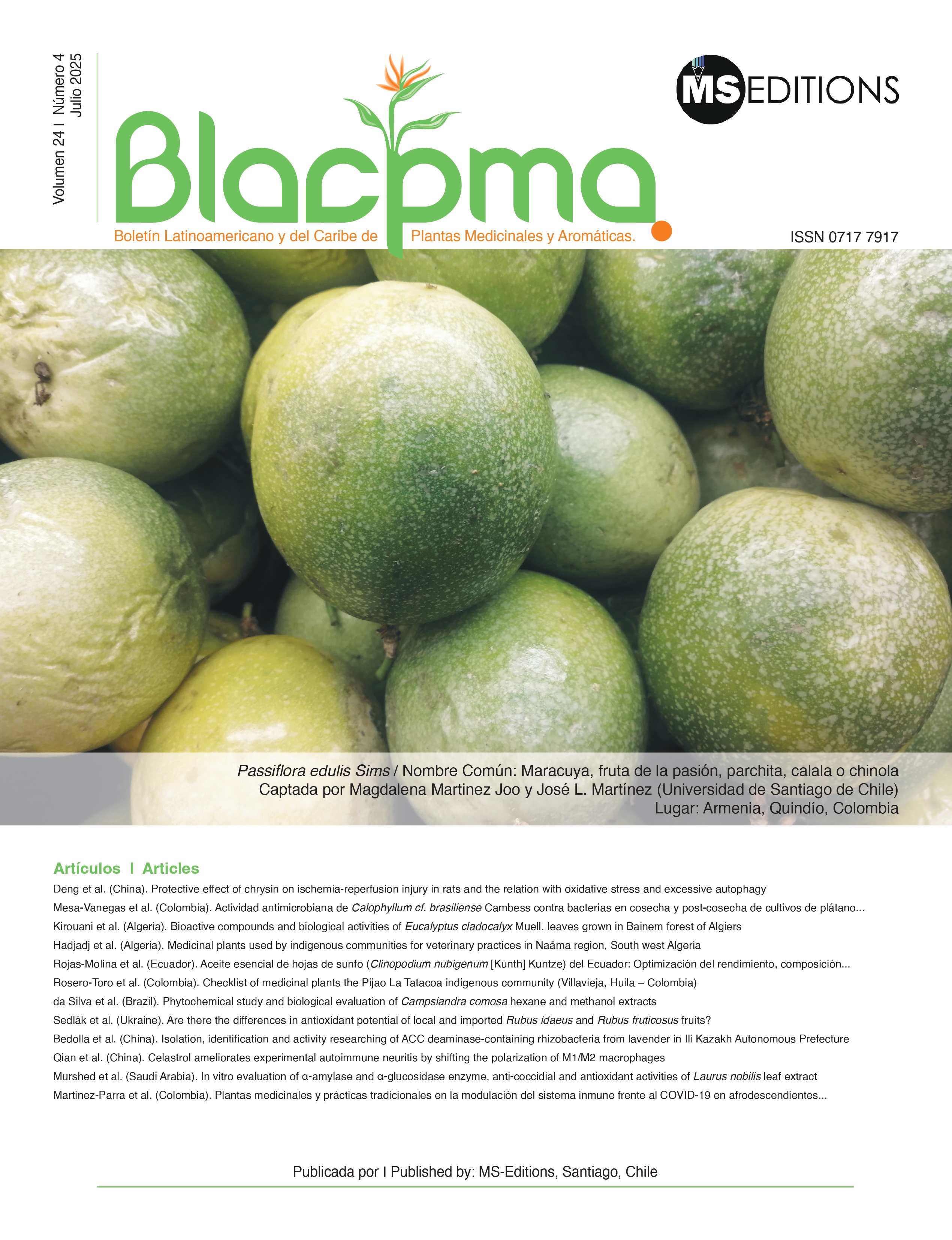Phytochemical study and biological evaluation of Campsiandra comosa hexane and methanol extracts
DOI:
https://doi.org/10.37360/blacpma.25.24.4.41Keywords:
Campsiandra comosa, Fabaceae, Flavonoids, NMR, TerpenesAbstract
Campsiandra comosa (Fabaceae) is a medicinal Amazonian plant with no previous chemical fractionation. Thus, the objective of the current study was to evaluate extract toxicity on Artemia salina, antioxidant activity (DPPH and Fe3+/Phenanthroline), and antibacterial and antiangiogenic activity of C. comosa, and to perform a chemical fractionation. Leaf hexane and trunk bark methanolic extracts, after phytochemical prospection, were fractionated. Isolated substances were identified by nuclear magnetic resonance (NMR) (1D and 2D) and mass spectrometry (MS). Chromatographic fractionation allowed the isolation of lupeol, β-sitosterol, 4´,5,7-trihydroxyflavone (apigenin) and quercetin-3,7,3'-trimethylether (pachypodol). Methanolic extracts of branch and trunk barks showed inhibitory activity against Pseudomonas fluorescens. Only methanol extracts showed antioxidant activity. Extracts, except those obtained from branch and bark with hexane, showed antiangiogenic activity. Evaluated extracts showed no toxicity against Artemia salina. The results show the high biological potential of Campsiandra comosa encouraging further fractionation research.
Downloads
Downloads
Published
How to Cite
Issue
Section
License

This work is licensed under a Creative Commons Attribution-NonCommercial-NoDerivatives 4.0 International License.

